Building Design, October 2006, Feature
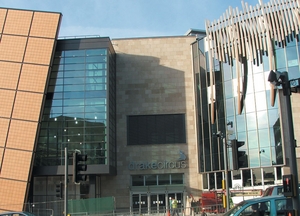
Architect: Chapman Taylor
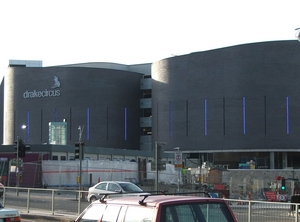
Is this the worst monstrosity ever to blight a town centre? Possibly not. But as an example of how bad architecture and bad planning can combine to produce something truly awful, it deserves to win our cup.
Nominated by Daniel Atkins of PDP Green Consulting, who says: “The building is comprised of a massive shopping precinct and car park. Apparently the planners were so concerned about its vast size, they insisted on visually fragmenting the facade. This results in a collision of styles and materials with no unifying characteristics whatsoever. The car park entrance of the building is a tour de force, being as it is the bum of the monster.”
2 Lough Road Housing, London
Architect: CZWG
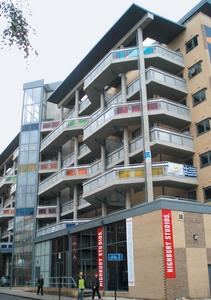
The north London housing scheme was part of the Arsenal Ashburton Grove development as a section106 agreement along with the controversial relocation of the old waste transfer centre. But as the various elements of CZWG’s housing scheme reach completion, that dump isn’t looking quite so bad.
It’s nominated by Richards Partington Architects. “We can only assume that this was a design and build scheme where CZWG were not novated — well at least we hope so anyway! The particularly bad view of the scheme is from the train heading into King’s Cross — what a mess!”
3 Nexus One, Swiss Cottage, London
Architect: S&P Architects
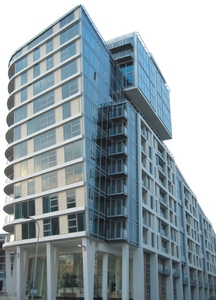
Times architecture critic Tom Dyckhoff nominated this as a stunning examplar of dumbing down. “This building typifies the British cheapskate approach to designing cities that we call regeneration, but I call Faustian Urbanism.
“Round the corner is a perfectly nice piece of modern urban design, with buildings by Bennetts Associates, landscaping by Gustafson Porter, the nicely refurbished Spence Library, even the new swimming pool by Terry Farrell isn’t bad. It’s almost that old-fashioned thing, a civic space.
“In order to pay for it, though, we have to have this steroidal, surgically enhanced crap icon pumped full of luxury flats: in outline it’s been designed by Farrell. In hideous, very badly detailed reality the execution was passed to S&P. Either way it’s trophyism. And it’s a bloody wedge. If I see another bloody wedge-shaped high rise I’ll cry.”
4 St George Wharf, London
Architect: Broadway Malyan
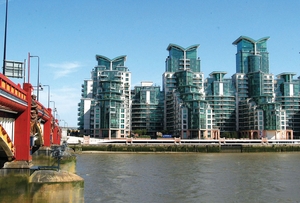
Has there ever been such a chasm between hype and reality? The marketing for this Thames-side residential development (the fifth phase of which has just been completed) promises a “shimmering architectural aesthetic… worthy of its place among some of Europe’s most spectacular landmarks”.
You beg to differ. Nominated by Nigel Coates, who calls it: “Truly one of the worst buildings I have ever seen. It’s even worse now that it’s nearly finished than I thought it was going to be. It should be knocked down and the architect struck off.”
5 Serpentine Pavilion
Architect: Rem Koolhaas
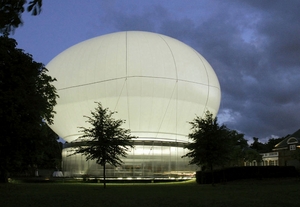
It promised so much and delivered so little. When Koolhaas’s air balloon arrived in Kensington Gardens this year, you decided it was overinflated. Nominated by RIBA Journal editor Hugh Pearman:
“A bad attempt at 1960s inflatable architecture, the sort of thing Archigram would have done with much more style. It somehow manages to be both lighter-than air and ponderous. The balloon roof cannot be raised in anything more than the lightest breeze.”
6 University College London Hospital
Architect: Llewelyn Davies
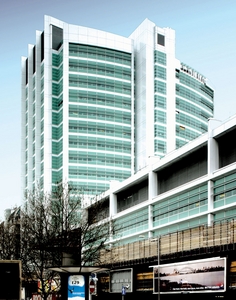
Built more than 12 months ago, we don’t have any difficulty justifying its inclusion — because of the number of nominations it got and because we absolutely loathe it.
Nominated by Alison Brooks: “Some buildings make your heart freeze when you look at them and this is one of them. The relentless curtain walling, the bizarre proportions of the fenestration, the green glass, the strange plasticky whiteness of the cladding just screams ‘PFI’. This building has nothing to do with place, scale, materiality, context or culture. This building is utterly without joy. It kills the Euston Road.”
Also nominated by Cabe’s former design review director Peter Stewart: “There are three main problems with this building: the top — the tower is dumb, sliced off at an awkward angle; the bottom — the main entrance ‘feature’ is over-scaled, overdominant, unrelated to the building; and the middle — the tower is overblown, on steroids — or are its bulges a metaphor for the national obesity crisis?”
7 BBC Radio, Paradise Street, Liverpool
Architect: Page & Park
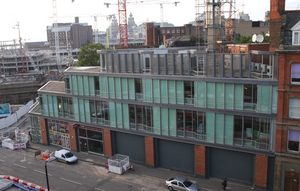
Poor old BBC. With its reputation as an enlightened client already damaged by the BBC fiasco in London, its next offering does nothing to salvage it. Nominated by David Dunster, head of Liverpool school of architecture: “It was the first completed building in the Grosvenor development and it’s a hugely wasted opportunity on an important corner site. Everything fidgets on this building particularly the glazed facade onto the main street. It’s like a hornet with a tick.”
8 Moor House office development, London
Architect: Foster & Partners
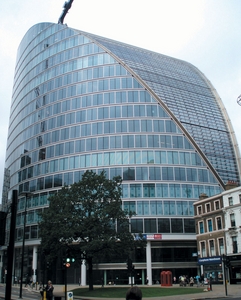
Although it was also completed more than 12 months ago we decided to let it through anyway for its sheer bullishness. Nominated by Guy Appleton: “Crude and joyless, shaped like a big wedge of panettone but unfortunately inedible.
“Makes you nostalgic for the Cartesian 1960s buildings they demolished to build it. Definitely one from the Foster C list.”
9 Ibis Hotel, Harbourside, Bristol
Architect: Faulkner Browns
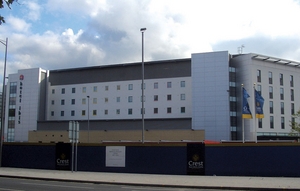
We don’t expect much from Ibis, but on one of the most interesting urban sites in the UK, this is a shocker. Nominated by George Ferguson:
“I fortunately did not know who the architects were, assuming it had been produced by the Ibis sausage machine… The commercial buildings on Canon’s Marsh, which form the setting to our splendid cathedral, are a disappointment. What was heralded as one of the best urban development opportunities in Europe has been cruelly compromised.”
10 St. George’s Island, Castlefield, Manchester
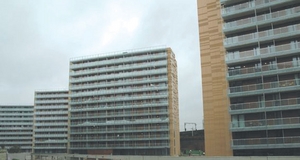
A residential scheme right next to Urban Splash’s HQ at the Timber Wharf campus — the two are as different as chalk from cheese. This 434-home project, arranged in tall blocks, was originally a John McAslan design for 330 flats before developer Dandara shoehorned in masses more by increasing the height. Our anonymous nominee said: “It gives high-density a bad name. Cynical in the extreme.